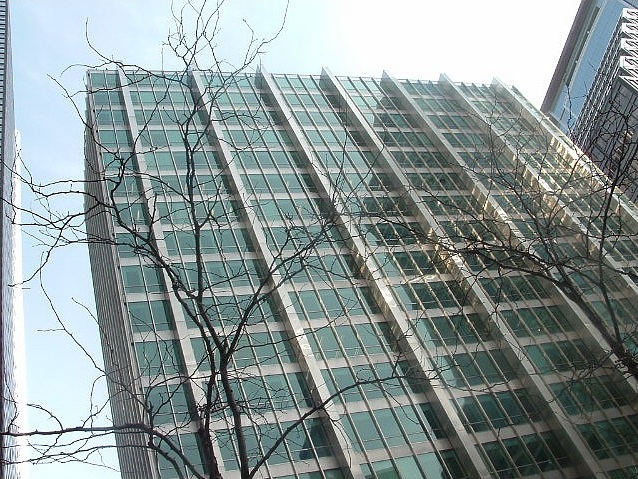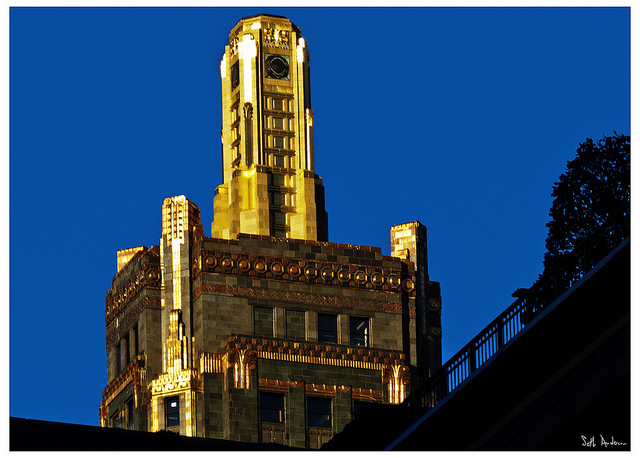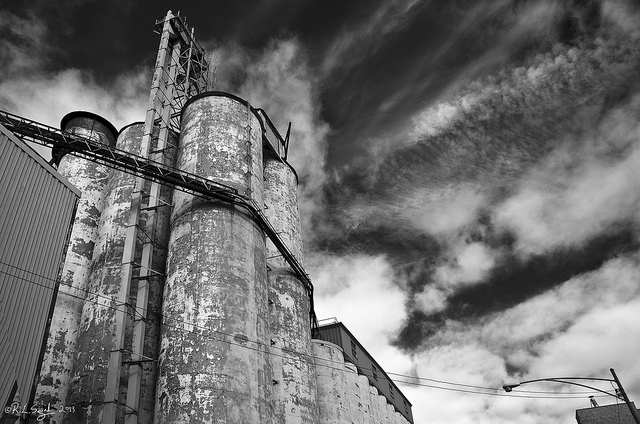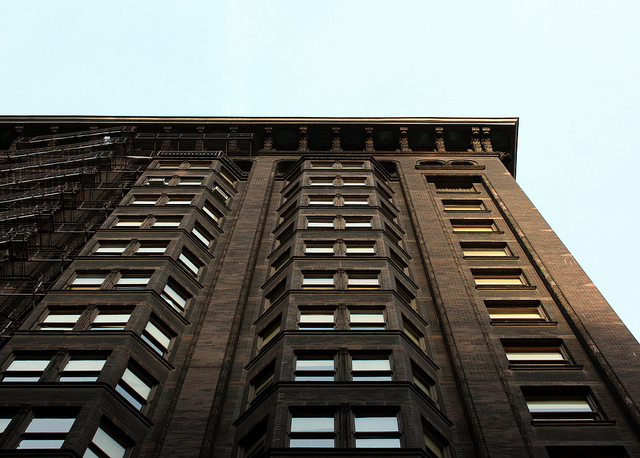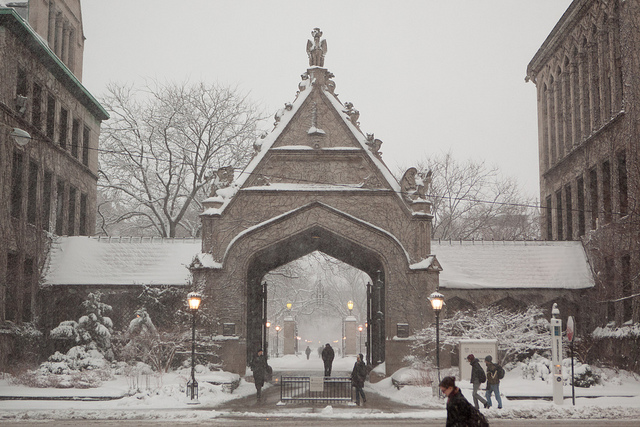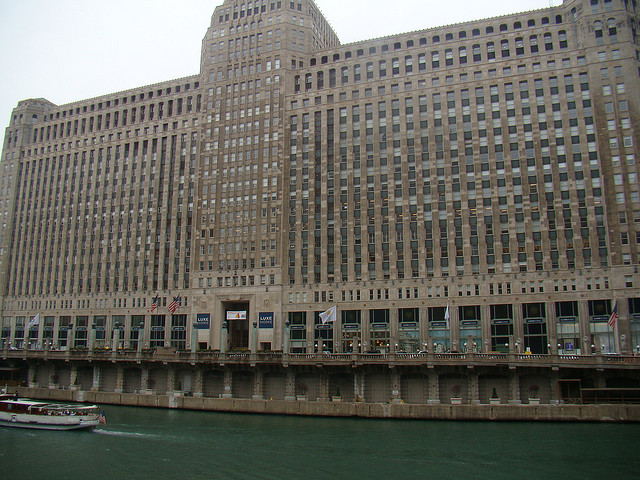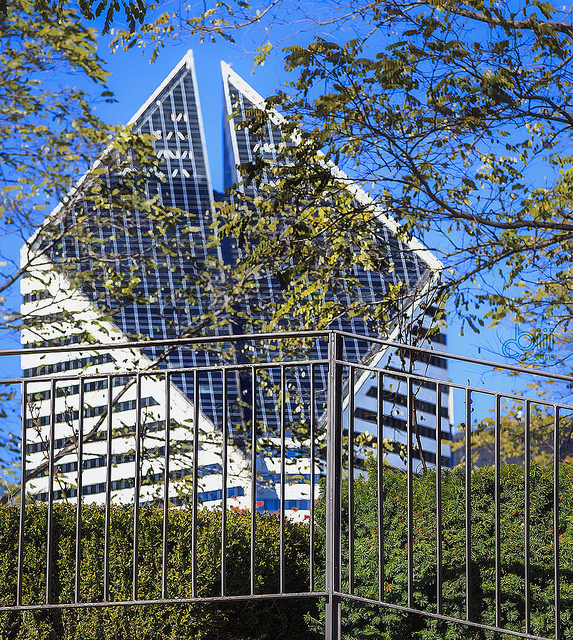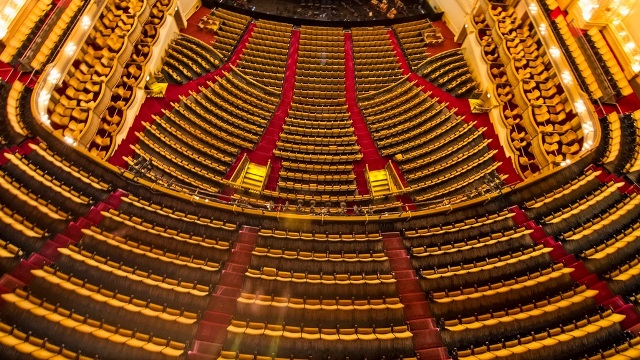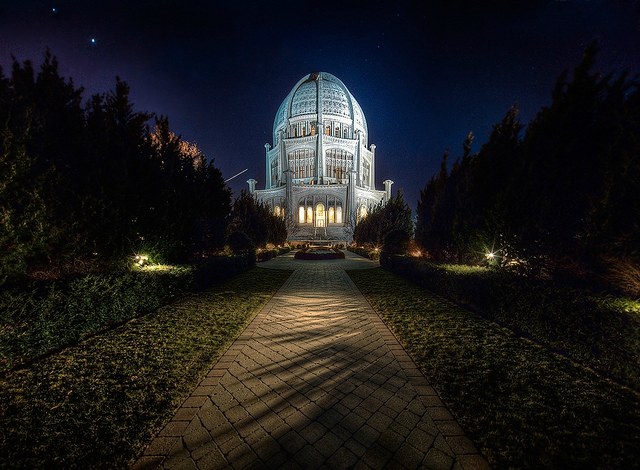The 12 Best Buildings And Skyscrapers In Chicago
By Staff in Arts & Entertainment on Jun 11, 2014 7:30PM
Few cities are as proud of their architecture as Chicago. This is, after all, the city where the skyscraper was invented and the architects who helped build them form a Hall of Fame of building and design: Sullivan; Adler; Burnham; Jenney; Root; Mies; Tigerman; Nagle. Modern architects like Adrian Smith and Jeanne Gang have created modern masterpieces that have quickly become additions to a globally recognized skyline.
Great Chicago architecture, however, isn't relegated to the Loop and there are some amazing buildings in the outlying neighborhoods that take our breath away and stir emotions. Here are some of our favorites.
Aqua
Among the newest landmarks to join the Chicago skyline, Aqua made waves for it undulating exterior. In actuality, there’s a traditional rectangular box inside the multi-use tower filled with a hotel, apartments, and condos. But the flowing curved balconies give the building its wavy shape. Starchitect Jeanne Gang used computers to assist in determining each unique floor plate of the 82-story structure—which at 859 feet is the tallest building in the world designed by a woman. With every floor different, every angle of the building when viewed from afar is also unique. The way light interacts with the building also creates different views throughout the day. As much as we love all of Chicago’s architecture, no one building keeps us entranced as long each time we encounter it as Aqua does. — Benjy Lipsman
Aqua is located at 225 N. Columbus Drive.
Inland Steel Building
The first Loop skyscraper built in Chicago following the Great Depression and World War II, the Inland Steel evokes a timeless modernism to this day. Designed by SOM and completed in 1958, the building clad in stainless steel and glass. The building’s exterior glistens in the sun and is supposedly virtually maintenance free to boot. Among the many advancements incorporated into the Inland Steel Building were underground parking and air conditioning. Additionally, all the support columns--seven ribs down the sides--were moved to the exterior while all the mechanicals like elevators and restrooms were relegated to a shaft off the back, providing entirely unobstructed office floors. — Benjy Lipsman
Inland Steel Building is located at 30 W. Monroe Street.
Carbide & Carbon Building
Perhaps it’s the fact that this was one of the first downtown buildings I spent a good deal of time looking at out the window of the Intercontinental Hotel on a family vacation many years ago. Perhaps it’s my affinity for bubbly booze. Whatever the case, the Carbide and Carbon Building has always been my favorite sample of Chicago architecture. Constructed in 1929, the building’s dark green terra cotta exterior and gold leaf tower were meant to make the 37-floor structure resemble a giant Champagne bottle. The Carbide & Carbon Building is currently home to the Hard Rock Hotel and Angels and Kings bar, so while most Chicagoans don’t spend much time inside the building, it’s hard to walk past without recognizing it as a truly unique piece of architecture amidst an already iconic skyline.— Katie Karpowicz
The Carbide & Carbon Building is located at 230 N. Michigan Ave.
Tribune Tower
There’s so much to love about this building it’s hard to know where to begin. The intricacies of the Neo-Gothic masterpiece could keep your neck craned upward long enough for it to stick like that. The way the shadows fall across its crown when it’s lit up at night, or the sun dapples its sides in morning light. It’s a beautiful thing, to be sure—it was, after all, the winning design from a 1922 contest asking architects to create the most beautiful and distinctive office building. But one of the things I enjoy most is at ground level. Though perhaps an afterthought to the frequent passerby, where else can you touch so much of history in so little space? From space rocks to pyramid pieces, Alamo to Angkor Wat, it’s all there for you to explore and admire. It’s got a face that’s irreplaceable in the skyline and the stories to go with it. You can’t beat that. —Marielle Shaw
Tribune Tower is located at 435 N. Michigan Ave.
ADM Milling
As the West Loop transitions from a working industrial area to a sterile strip of expensive condos and restaurants, the gritty ADM Milling buildings are a reminder of the area’s history as well as the fact that there are still some holdouts. This is one of them, a place where people work to process and send Illinois’ agricultural bounty across the country. Take a look at the Ogden/Carroll or many of the Metra crossings in the West Loop, particularly the May Street tracks. It’s especially scenic viewed in front of a sunset or on a spooky autumn night walking down Ogden. —Melissa McEwen
ADM Milling is located at 1300 W. Carroll
Monadnock Building
This proto-skyscraper opened the same year Chicago hosted the World’s Columbian Exposition. The expo announced to the world that Chicago had risen from the ashes of the Great Fire 22 years earlier, but it mostly did so with architecture that looked to European Beaux Arts classicism. The Monadnock, on the other hand, helped define a new era of design. It was the world’s largest office building when it was finished, and also among the first to ever employ a curtain wall system that didn’t rely on load-bearing facades to prop up the structure. Handsome and largely free of ornament, it remains striking today, but in 1893 it was downright trailblazing. Now it’s neighbors with Mies van der Rohe’s federal plaza—a later modernist icon that would not have been possible without the Monadnock. —Chris Bentley
The Monadnock Building is located at 53 W. Jackson Blvd.
Cobb Gate at University of Chicago
It might not reach as high as a skyscraper, but the arched gate at the entrance of University of Chicago’s quad is nothing short of mesmerizing. The grotesque gargoyles perched along the gate are arguably the most beautiful in the city. The thick coat of ivy, changing with the season, is always enchanting, contributing a Gothic flair to the lovely campus.. — Erika Kubick
Cobb Gate is located at 1101 E. 57th Street.
Merchandise Mart
Glimpsed from the ‘El,’ Merchandise Mart hulks like a limestone monolith over the Chicago River. It took nearly eight years to build, and was the largest building in the world when construction finished in 1931. More than 80 years later, it’s still a touchstone for design—this week tens of thousands of interior design professionals and enthusiasts flock to the Mart for Neocon, the largest home furnishings and interior design expo in North America. But it’s not just size that makes Merchandise Mart a true Chicago icon. The art deco details and geometric parapets are an integral part of the downtown skyline. —Chris Bentley
Merchandise Mart is located at 222 W. Merchandise Mart Plaza.
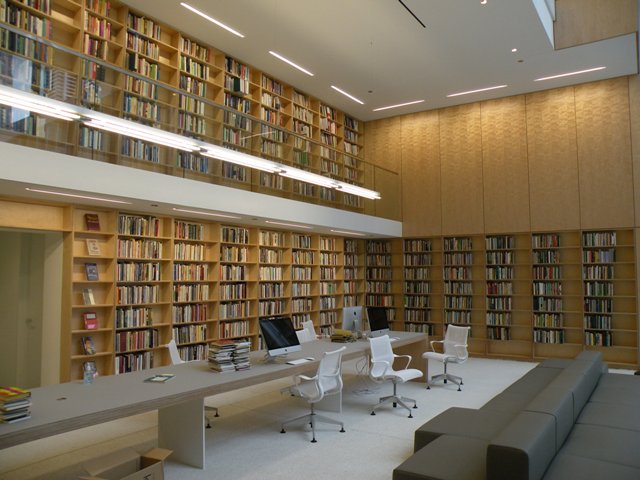
Another view of the Poetry Foundation's public library.
Poetry Foundation
It’s been said that architecture is a kind of poetry of materials, and The Poetry Foundation by John Ronan Architects takes that sentiment literally. Elegance abounds in the building’s interplay of light and space. A perforated black zinc screen surrounding the building mediates between public life on the street and self-reflection indoors. Circulation throughout the building is a kind of journey, starting with a meditative courtyard space that primes visitors for a sense of discovery. It’s too on the nose for the building’s writerly guests to suggest, so we’ll have ask it—what else would you call a building so subtly powerful but poetic? —Chris Bentley
The Poetry Foundation is located at 61 W. Superior St.
Crain Communications Building
The diamond head atop the 41-story Crain Communications Building by designer Sheldon Schlegman was one of the first that caught my eye when I first took a long glance at the city’s skyline, even if it much shorter than some of the other visible skyscrapers from Grant Park. It’s unusual, bold and mildly attractive. When I heard it was called the Stone Container Building, memories of working at a Stone Container plant in the summer months of my college years came rushing to me. It’s a strange sort of sentimentality, as I spent hours a day pulling fresh cardboard off a corrugator at about 300 linear feet a minute, but they are days I never will forget when I look at that structure.
Perhaps something subliminal is at play, too, as I recently discovered that it’s also known as the "Vagina Building." I had no idea until I did a little reading about it the other day. You’ve got to believe me. I seriously didn’t know! — Casey Moffitt
The Crain Communications Building is located at 150 N. Michigan Ave.
The Auditorium Theatre
This Adler & Sullivan designed building has lived a variety of lives since being built in 1889, from rock bands to housing World War II servicemen. Chicago businessman Ferdinand Wyth Peck came up with an idea to create a world class performance venue that would not only serve the wealthy but also the common man, taking careful thought to make sure that the venue has a decent line of sight no matter where you are sitting. Regardless of what is on the stage, your eyes should get ready to take in a lovely view. Entering through small darker hallways, you burst into the cavernous theatre, your eyes adjusting in a room full of gold tones along with carvings and paintings that depict scenes of nature and of course the arts. As beautiful as the scenery is, the sound is even more incredible. The Theatre is known for having perfect acoustics, and no matter what I’ve seen there, from Radiohead to the ballet, the sound is always excellent. It is one of my favorite places to enjoy a performance and a truly beautiful gem in Chicago architectural history. — Lisa White
The Auditorium Theatre is located at 50 E. Congress Pkwy.
Bahá'í House of Worship
For many not familiar with the Bahá'í House of Worship, the large dome structure situated in Wilmette looks like it was woven out of lace and placed gently down in the suburban landscape from some faraway place. It rises up to the side of the road amongst the greenery of the neighborhood, a mesmerizing vision in white to take in. The Bahá'í House of Worship is the oldest surviving Bahá'í House of Worship in the world and the only location in the United States. For those unfamiliar with the Bahá'í Faith, it is a religion that focuses on the spiritual unity of humankind. In a shortened version, Bahá'í Faith includes the idea of one God, that all major religions share one God and have the same spiritual source and that all humans are created equal. I’m not deeply attached to any particular religious idea, but I do appreciate a beautiful place of worship that creates a wonderful quiet space to reflect. The building encompasses numerous religions in the carvings throughout, including Christian, Jewish, Hindu and Buddhist symbolism. Bahá'í believe that the number nine symbolizes completion (since it is the last number in the decimal system) so numerous elements in the building deal with the number nine, such as nine alcoves, nine domes and nine fountains in the gardens. With the clean, serene and repetitive design, the temple is the perfect calming spot to reflect and collect your thoughts while enjoying architecture that isn’t as prevalent in Chicago. — Lisa White
Bahá'í House of Worship is located at 100 Linden Ave, Wilmette, IL.

